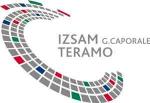Vaccines against bluetongue in Europe
Investigación publicada en Comparative Immunology, Microbiology and Infectious Diseases
1 de marzo de 2008
After the incursion of bluetongue virus (BTV) into European Mediterranean countries in 1998, vaccination was used in an effort to minimize direct economic losses to animal production, reduce virus circulation and allow safe movements of animals from endemic areas. Vaccination strategies in different countries were developed according to their individual policies, the geographic distribution of the incurring serotypes of BTV and the availability of appropriate vaccines. Four monovalent modified live virus (MLV) vaccines were imported from South Africa and subsequently used extensively in both cattle and sheep. MLVs were found to be immunogenic and capable of generating strong protective immunity in vaccinated ruminants. Adverse side effects were principally evident in sheep. Specifically, some vaccinated sheep developed signs of clinical bluetongue with fever, facial oedema and lameness. Lactating sheep that developed fever also had reduced milk production. More severe clinical signs occurred in large numbers of sheep that were vaccinated with vaccine combinations containing the BTV-16 MLV, and the use of the monovalent BTV-16 MLV was discontinued as a consequence. Abortion occurred in <0.5% of vaccinated animals. The length of viraemia in sheep and cattle that received MLVs did not exceed 35 days, with the single notable exception of a cow vaccinated with a multivalent BTV-2, -4, -9 and -16 vaccine in which viraemia persisted at least 78 days. Viraemia of sufficient titre to infect Culicoides insects was observed transiently in MLV-vaccinated ruminants, and natural transmission of MLV strains has been confirmed. An inactivated vaccine was first developed against BTV-2 and used in the field. An inactivated vaccine against BTV-4 as well as a bivalent vaccine against serotypes 2 and 4 were subsequently developed and used in Corsica, Spain, Portugal and Italy. These inactivated vaccines were generally safe although on few occasions reactions occurred at the site of inoculation. Two doses of these BTV inactivated vaccines provided complete, long-lasting immunity against both clinical signs and viraemia, whereas a single immunization with the BTV-4 inactivated vaccine gave only partial reduction of viraemia in vaccinated cattle when challenged with the homologous BTV serotype. Additional BTV inactivated vaccines are currently under development, as well as new generation vaccines including recombinant vaccines
Savini G., MacLachlan NJ., Sanchez-Vizcaino JM. y Zientara S.
 | Departamento de Sanidad Animal. Facultad de Veterinaria. Universidad Complutense (UCM). |
 | Servicio de Inmunología Viral y Medicina Preventiva (SUAT). Centro de Vigilancia Sanitaria Veterinaria (VISAVET). Universidad Complutense (UCM). |
 | Istituto Zooprofilattico Sperimentale dell Abruzzo e del Molise (IZSAM). |
| Department of Pathology, Microbiology and Immunology. School of Veterinary Medicine. University of California-Davis (UCDAVIS). | |
| AFSSA—LERMVD. | |
